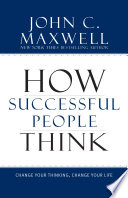

Big-picture thinking is the ability to see the larger context and understand how various elements fit together. Successful people excel at this because they can visualize the end goal and plan the steps necessary to achieve it. This type of thinking allows them to prioritize effectively, make informed decisions, and remain motivated in the face of challenges. It encourages creativity and innovation, as big-picture thinkers often find unique solutions that others may overlook. By focusing on the broader vision rather than getting bogged down in minute details, they can inspire others and galvanize support for their initiatives.
Continue readingFocused thinking involves concentrating on a specific problem or issue without distraction. Successful individuals cultivate this ability to dive deep into their subject matter, analyze it thoroughly, and develop well-thought-out solutions. This type of thinking is crucial for problem-solving and decision-making, as it helps individuals to dissect complex issues and identify the core elements that need addressing. Focused thinkers are often seen as experts in their fields because they invest the time and energy required to master their topics. This level of concentration also helps in minimizing errors and enhancing productivity.
Continue readingCreative thinking is the process of generating new ideas, concepts, or solutions. Successful people embrace creative thinking as it allows them to break free from conventional patterns and explore innovative avenues. This type of thinking is essential in today’s rapidly changing world, where adaptability and originality can set individuals apart from their peers. Creative thinkers often engage in brainstorming sessions, utilize mind mapping, and encourage collaboration to foster an environment where ideas can flow freely. By valuing creativity, they can drive progress and inspire those around them to think outside the box.
Continue readingRealistic thinking is grounded in practicality and the understanding of current circumstances. Successful people use this type of thinking to assess situations accurately, weigh pros and cons, and make informed decisions based on facts rather than emotions or assumptions. Realistic thinkers are adept at setting achievable goals and developing actionable plans to reach them. This helps in avoiding pitfalls and managing risks effectively. By balancing optimism with realism, they can maintain motivation while being prepared for potential setbacks, allowing them to navigate challenges with confidence.
Continue readingStrategic thinking involves the ability to plan for the future and anticipate potential challenges and opportunities. Successful individuals utilize strategic thinking to align their actions with their long-term goals. This type of thinking requires an understanding of both the internal and external environments, enabling individuals to make decisions that will benefit them in the long run. Strategic thinkers are often proactive rather than reactive, allowing them to seize opportunities before they become apparent to others. This foresight is crucial in leadership and management, where vision and direction are paramount.
Continue readingReflective thinking is the practice of assessing past experiences to glean insights and lessons that can inform future actions. Successful people regularly engage in reflection to evaluate their decisions, understand their impacts, and identify areas for improvement. This type of thinking fosters personal growth and development, as it encourages individuals to learn from both successes and failures. By taking the time to reflect, they can refine their strategies and approaches, ensuring continuous improvement. Reflective thinkers are often more resilient, as they can adapt their methods based on previous outcomes.
Continue readingShared thinking emphasizes collaboration and the pooling of ideas among a group. Successful people recognize the value of diverse perspectives and actively seek input from others to enhance their decision-making processes. This type of thinking fosters teamwork and innovation, as it encourages open dialogue and the exchange of ideas. By cultivating an environment of shared thinking, leaders can harness the collective intelligence of their teams, leading to more robust solutions and greater buy-in for initiatives. This collaborative approach not only strengthens relationships but also drives organizational success.
Continue reading